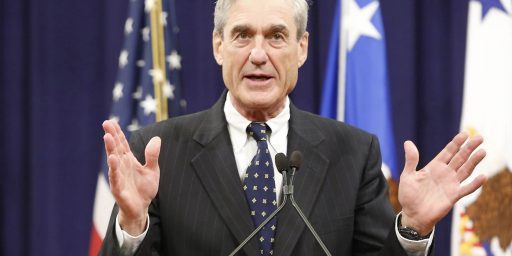Race Breaking to Bush?
After months of the tightest presidential election contest in recent memory, a new NEWSWEEK poll suggests momentum may be moving toward President George W. Bush. As the bitter campaign enters its final days, against the eerie backdrop of a surprise appearance by Osama Bin Laden, Bush’s lead is still within the poll’s margin of error, but larger than last week. If the election were held today, 50 percent of likely voters would cast ballots for Bush and 44 percent for the Democrat, Sen. John Kerry. (Ralph Nader would receive 1 percent.) That compares to a Bush lead last week among likely voters of 48 percent to Kerry’s 46 percent. In a two-way trial heat, excluding Nader, Bush/Cheney would defeat Kerry/Edwards 51 percent to 45 percent among likely voters. Last week Bush led 48 to 47 in the two-way contest.
The poll finds the race closer among registered voters. Forty-eight percent of registered voters would vote for Bush and 44 percent would vote for Kerry. One percent would vote for Nader. In a two-way race, 48 percent would vote for Bush/Cheney and 45 percent would vote for Kerry/Edwards. The worse news for Kerry: in the last lap of the race, the number of “persuadables†is falling. Now, 9 percent of registered voters say they haven’t made up their minds, down from 13 percent last week. And just 6 percent of likely voters say they haven’t decided.
While this is good news for my candidate–I’d rather be up six among likely voters in the head-to-head than down six–I’m highly skeptical of the likely voter screens at this point. No one has any clue about whether the late deciders will actually turn out to vote, other than the conventional wisdom that the closeness of the race will motivate the electorate. There’s some support for this in the states that have early on-site voting, too. Still, if the “likely voter” screen is too stringent, it may well be that this is an off election where the “registered voter” poll is more predictive.
Still, most signs seem to indicate that Bush holds a narrow lead in both the popular vote and the likely electoral vote. The RealClear Politics average shows Bush up by 2.1% and holding a lead ranging from 1% to 6% in all the recent polls except for the Reuters/Zogby survey, which has Kerry up 1%. Indeed, as the WaPo tracking poll shows, Kerry hasn’t had a statistically significant lead in over a month–even after his post debate bounce.
The Electoral College predictions are more scattered, though:
The RCP average has Kerry leading in both Pennsylvania (2.6%) and Ohio (0.7%) while Bush leads in Florida (1.7%). Overall, RCP has it Bush 232 – Kerry 207–but that’s without factoring in any of those three key states because their close margins put them into the “tossup” range.
Scott Elliot’s Election Projection has it at Bush 259 – Kerry 279, counting all the leaning states regardless of margin with Bush taking Ohio and Kerry taking Florida.
Electoral-Vote.com has it Kerry 243 – Bush 280, with Bush carrying Ohio and Florida and Kerry taking Pennsylvania.
Slate’s Electoral Scorecard gives Ohio to Kerry and makes the margin Kerry 272 – Bush 266.
Several other polls (see the top navbar) have different margins, although the others don’t include leaners and thus have neither candidate at the magic 270 Elector threshhold.
The bottom line remains as it has for months: No one has any idea who’s going to win this race. Despite their bravado, both campaigns are going to be incredibly nervous until this is over with.



Right. There are just too many variables to get a good sense of what’s going to happen on Tuesday. For one thing, nobody has any idea what the turnout will be. Nobody has any idea what polls are better than others. It’s said that undecideds always break for the challenger, and while it makes sense, I haven’t yet seen any conclusive, empirical proof to justify that CW. Furthermore, I’ve read a fairly solid rebuttal, arguing that undecideds break for the incumbent. Who knows?
There’s also very little consensus in the blogosphere. Left leaning blogs think it’ll be a Kerry win, right leaning blogs seem pretty certain that Bush is going to win. Each side trots out data supporting their thesis that their man is the winner.
So basically, anyone who thinks that they know what’s happening really has no idea.
The incumbent rule regarding undecideds breaking for the challenger is historically valid if, but only if, it is properly applied. It applies only to those remaining undecided after the last poll is taken.
There are a number of historical examples of those undecided in the summer or on Labor Day breaking for the incumbent (e.g. See Jerry Ford 1976).
The research Chris Bowers of Mydd and Mark Blumental, the Mystery Pollster, have done suggests that the challenger to an incumbent President has always (or nearly always?) received a vote share 1-2+% greater than his final poll number.
Only now have we reached the point when the incumbent rule is supposed to apply.
That said, it should be noted that past performance many not be indicative of future results.